How to Train Your British Shorthair Cat Effectively
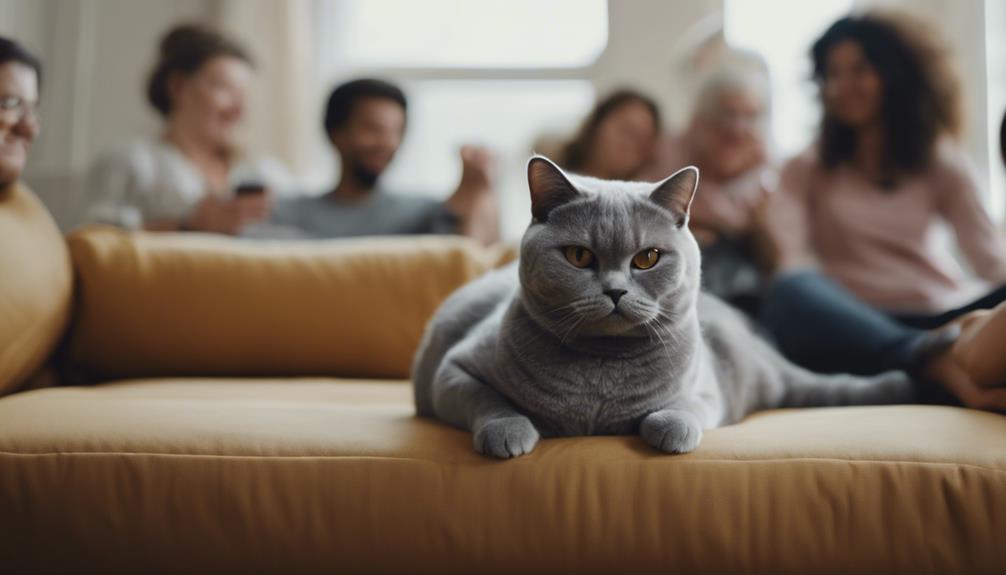
British Shorthair cats are known for their intelligence and independence. To effectively train them, it is crucial to understand their unique characteristics and needs. Start by establishing a consistent routine and using positive reinforcement techniques.
Patience is key when training British Shorthair cats, as they may take longer to learn new commands compared to other breeds. Be sure to provide plenty of mental stimulation and interactive play sessions to keep them engaged.
Additionally, consider their individual personalities and preferences when developing a training plan. By tailoring your approach to suit your cat’s specific needs, you can unlock their full potential and build a strong bond based on trust and communication.
Understanding British Shorthair Behavior
The British Shorthair cat is characterized by its patient and engaging demeanor, making it well-suited for short training sessions. When training a British Shorthair, it’s essential to understand their common behavioral traits. Due to their independent nature, consistency in training is crucial. Positive reinforcement techniques work best with this breed, as they respond well to rewards and praise. Socialization plays a significant role in shaping their behavior, helping them build confidence and responsiveness.
In terms of mental stimulation, British Shorthairs enjoy interactive toys that challenge their intelligence. While they may not excel in agility tricks, activities that engage their minds are more suitable. Understanding their laid-back disposition is key to adapting training methods effectively. By aligning training activities with their natural tendencies, such as their preference for short sessions and interactive play, owners can foster a positive learning environment for their British Shorthair.
Establishing a Training Routine
Establish a consistent training routine to provide structure and support for your British Shorthair’s learning and development. Setting a consistent schedule for training sessions is essential to create a routine that your cat can rely on.
Incorporating meal times into training can leverage their natural feeding instincts, enhancing the effectiveness of the learning process. Using consistent commands and cues during these sessions will help your British Shorthair understand and respond appropriately to your instructions.
It’s also beneficial to integrate playtime into training sessions to keep your cat engaged and motivated throughout the learning process. Furthermore, ensuring scheduled socialization opportunities is crucial for helping your British Shorthair build confidence and adapt to various situations.
Positive Reinforcement Techniques
When training your British Shorthair cat, incorporating positive reinforcement techniques is key to encouraging desired behavior and strengthening the bond between you and your feline companion. Utilizing positive reinforcement techniques can make the training experience a rewarding one for both you and your cat. Here are some effective methods to consider:
- Use healthy, bite-sized treats: Reward outstanding behavior sparingly with treats to reinforce positive responses from your British Shorthair without overindulging, as they’re prone to weight gain.
- Incorporate interactive playtime: Engage in interactive play sessions with stimulating toys to strengthen the bond with your British Shorthair, making training a fun and interactive experience.
- Consider clicker training: Implement clicker training to precisely mark and reward praise-worthy moments during training, helping your cat understand the desired behavior more effectively.
Consistency and Patience in Training
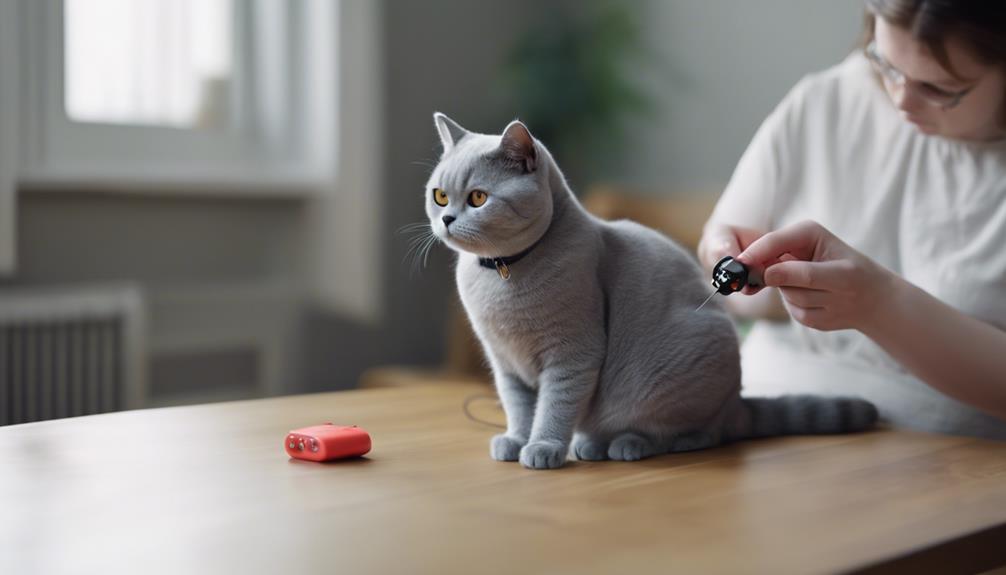
Consistency and patience form the bedrock of effective training for British Shorthair cats, ensuring steady progress and positive results.
Consistency involves reinforcing desired behaviors consistently during training sessions, which helps the cat understand what’s expected of them. Patience is crucial as British Shorthairs may take time to respond and adapt to training cues.
Establishing a regular routine is also essential as it creates a sense of security and expectation for the cat, making it easier for them to anticipate training sessions. Adapting training methods to suit the British Shorthair’s unique temperament is key to ensuring the effectiveness of the training.
Approach each training session with a positive attitude and a sense of humor to engage the cat effectively. By combining consistency, patience, and a positive approach, you can help your British Shorthair learn and exhibit the desired behaviors more readily, making the training process more enjoyable for both you and your feline companion.
How to Discipline a British Shorthair Cat
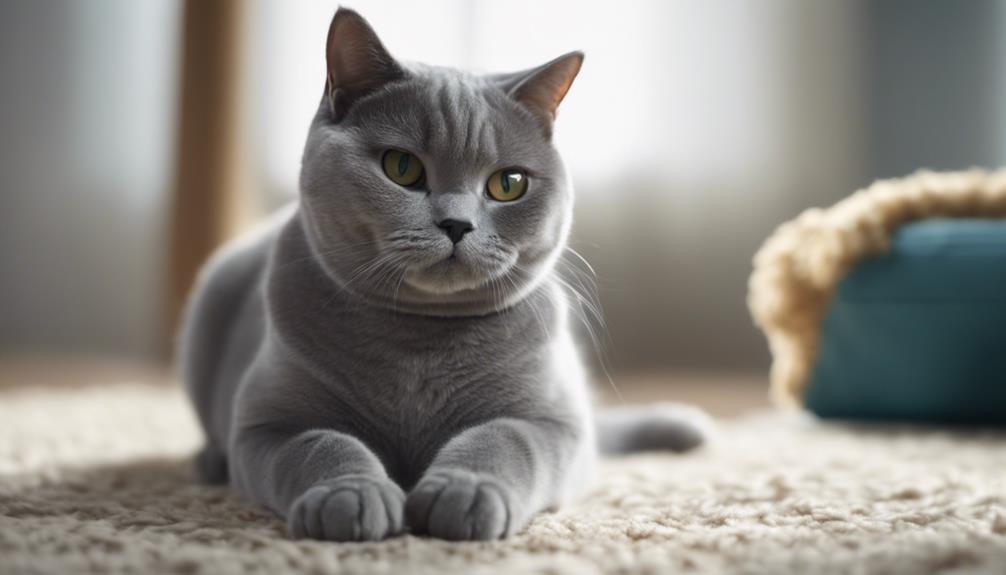
To effectively discipline a British Shorthair cat, focus on utilizing positive reinforcement techniques rather than resorting to harsh punishment or physical force, which can lead to fear and aggression. Positive reinforcement involves rewarding desired behaviors to encourage their repetition.
Here are some key points to consider when disciplining your British Shorthair cat:
- Redirection: When your cat displays unwanted behavior, redirect their attention to appropriate toys or activities.
- Consistency: Establish consistent rules and boundaries to help your cat understand what’s expected of them.
- Gentle Approach: Use a firm but gentle tone and body language to communicate disapproval without causing stress or anxiety.
Basic Training Techniques
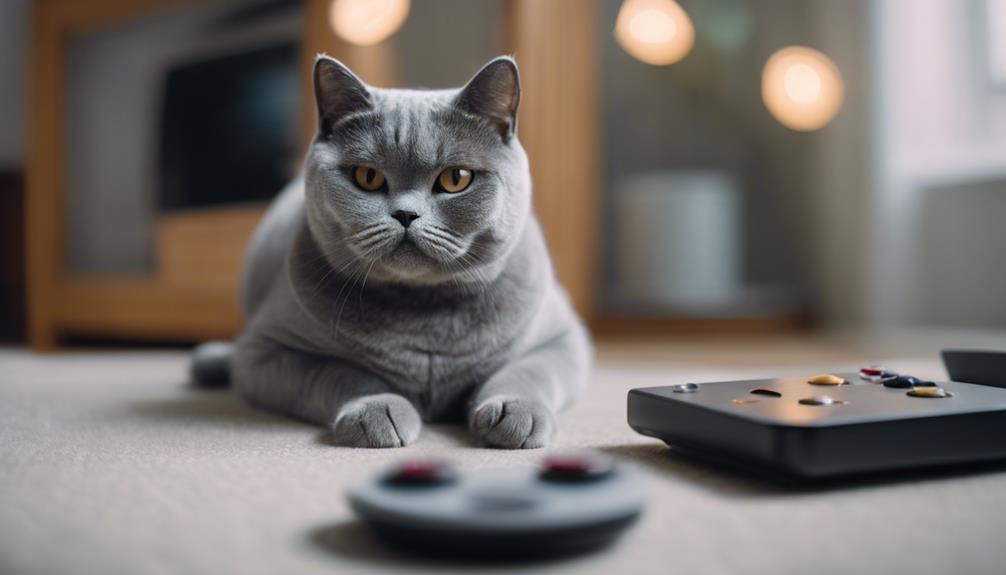
Utilizing positive reinforcement techniques is essential for effectively training your British Shorthair cat. When training a British Shorthair, positive reinforcement, such as using treats and praise, can encourage desired behaviors. Clicker training is also a useful method to mark and reward good behavior during training sessions.
Teaching basic commands like sit, stay, and come can establish clear communication and obedience with your British Shorthair. To strengthen the bond with your cat, consistent training sessions and interactive playtime are crucial. Additionally, addressing common behavioral issues like scratching or aggression requires redirecting their behavior and providing appropriate outlets for their energy.
Socializing Your British Shorthair Cat
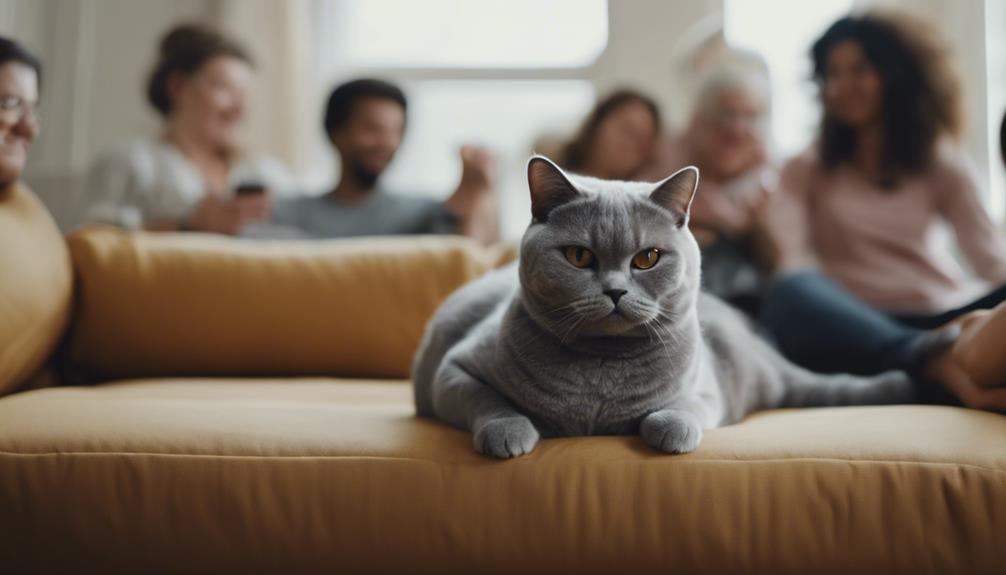
When training your British Shorthair cat, it’s crucial to start socializing them early to enhance their confidence and adaptability. Socializing your British Shorthair cat involves gradual introduction to various stimuli to prevent anxiety and build their social skills effectively. Here are three key strategies to help you in socializing your British Shorthair:
- Use positive reinforcement: Utilize treats and praise to reinforce positive behaviors during socialization sessions.
- Provide interactive toys and playtime: Engage your British Shorthair in interactive play sessions to encourage social interactions and bonding with you and others.
- Broaden social skills: Regularly expose your cat to new people, pets, and environments to broaden their social skills and prevent fearfulness.
Frequently Asked Questions
Are British Shorthair Cats Easy to Train?
British Shorthair cats can present behavior challenges during training, but with consistent positive reinforcement, patience, and a structured reward system, their progress can be rewarding. Time commitment, understanding their needs, and using appropriate training tools are essential for effective training.
What Tricks Can You Teach a British Shorthair?
British Shorthairs can learn a variety of tricks through clicker training and positive reinforcement. Interactive toys, treat dispensers, and agility exercises provide mental stimulation. Obedience commands, target training, and problem-solving tasks enhance their skills and abilities.
How Do You Bond With a British Shorthair?
To bond with a British Shorthair, engage in playtime activities, use treat rewards, practice grooming tips, learn communication signals, incorporate interactive toys, establish daily routines, provide positive reinforcement, maintain training consistency, engage in bonding exercises, and implement socializing strategies for a strong connection.
Do British Shorthair Cats Like to Be Held?
British Shorthair cats have varying preferences regarding being held. Some enjoy short cuddles and lap sitting, while others prefer personal space. Building trust, understanding body language, and respecting comfort levels are essential for effective socialization.










